Issue № 13(25)
DOI: 10.33098/2078-6670.2022.13.25.69-75 Krykhovetskyi I. Theoretically go to the review of history of Ukrainian parliamentarism
Krykhovetskyi I. Theoretically go to the review of history of Ukrainian parliamentarism
Purpose. The aim of our study is to identify theoretical approaches and characterize key concepts in the context of studying the history of Ukrainian parliamentarism, on the example of representative authorities created in the Habsburg Empire in the second half of the ХІХ – early ХХ century. Method. The methodological basis of the study was a set of general scientific, special scientific and historical methods, as well as the principles of historicism and objectivity. Results. Key theoretical and categorical-conceptual approaches to the study of the history of Ukrainian parliamentarism are revealed. The etymology of the concept of parliamentarism is determined, as well as the historical tradition of the formation of parliamentary institutions in Ukraine in the XIX – early XX centuries. We tend to believe that the origins of classical parliamentarism in Ukraine should be sought in the second half of the nineteenth century, when in Galicia and Bukovina, under the influence of constitutional changes, regional parliaments were established, which became the highest representative authorities in the region. Naturally, this was not a Ukrainian form of parliamentarism, but the practical experience gained by Ukrainians within the walls of the Galician and Bukovinian Seimas, as well as the imperial parliament, was extremely important. Scientific novelty. It is established that the theoretical basis for the study of the Galician Seimas is the concept of parliamentarism, rule-making activities, allegations, etc. All of them, first of all, point out that the regional seimas was a classic example of a representative body of power with pronounced legislative functions. Secondly, it is argued that the Galician and Bukovinian Seimas were the first classical parliamentary institutions to involve Ukrainian ambassadors. In addition, the existence of the Seimas had a significant impact on the society of that time, because the existing electoral system provided for the involvement of broad sections of society in political processes. Practical significance. The results of the study can be used in further historical and legal research, preparation of special courses.
Key words: parliamentarism, history of the state, regional seimas, rule-making activity, easement, allegates, propination.
References
1. Hoshovska, V. (2012). Spetsialnist «Parlamentaryzm» u suchasnykh umovakh pidhotovky kerivnykh kadriv [Specialty «Parliamentarism» in modern conditions of management training]. Visnyk Natsionalnoi akademii derzhavnoho upravlinnia pry Prezydentovi Ukrainy, 4, pp. 57-63. Retrived from: http://nbuv.gov.ua/UJRN/Vnadu_2012_4_9. (in Ukrainian)
2. Kyslyi, P., Vaiz, Ch. (2000). Stanovlennia parlamentaryzmu v Ukraini: Na tli svitovoho dosvidu [Formation of parliamentarism in Ukraine: Against the background of world experience]. K.: Abrys. 414 p. (in Ukrainian)
3. Myronenko, Ye. (2007). Politolohichnyi analiz teorii doslidzhennia parlamentaryzmu: umovy rozvytku v suchasnii Ukraini [Political science analysis of the theory of the study of parliamentarism: conditions of development in modern Ukraine]. Personal: zhurn. intelekt. Elity, 6. Retrived from: http://www.personal. in.ua/article.php?ida=515. (in Ukrainian)
4. Hoshovska, V. A., Pashko, L. A., Zadoia, K. F. (2013). Parlamentaryzm v Ukraini. Derzhavno-upravlinski mekhanizmy realizatsii funktsii zakonodavchoi vlady: navch.-metod. Materialy [Parliamentarism in Ukraine. State-administrative mechanisms of realization of functions of legislative power: teaching method. materials]. K.: NADU, 48 p. (in Ukrainian)
5. Pytlovana, V. (2009). Povnovazhennia Halytskoho stanovoho seimu (1775–1848 rr.) [Powers of the Galician Estates of the Sejm (1775–1848)]. Naukovyi visnyk Lvivskoho derzhavnoho universytetu vnutrishnikh sprav, 3, pp. 1-6. (in Ukrainian)
6. Horbatenko, V. P. (Comps.). (2004). Politolohichnyi entsyklopedychnyi slovnyk [Political science encyclopedic dictionary]. K.: Geneza. (in Ukrainian)
7. Rumiantsev, V. (1997). Tsentralna Rada: stanovlennia ukrainskoho parlamentaryzmu [Central Rada: the formation of Ukrainian parliamentarism]. Visnyk Akademii pravovykh nauk Ukrainy, 4, p. 71. (in Ukrainian)
8. Servitutne pravo na ukrainskykh zemliakh Rosiiskoi ta Avstro-Uhorskoi imperii v ХІХ st. [Easement law in the Ukrainian lands of the Russian and Austro-Hungarian empires in the XIX century] (2010). Derzhava i pravo, 50, pp. 135-142. (in Ukrainian)
9. Petryshyna, O. V. (Ed.). (2015). Teoriia derzhavy i prava: pidruchnyk [Theory of State and Law: a textbook]. Kh.: Pravo, 368 p. (in Ukrainian)
10. Tymochko, N. (2005). Ekonomichna istoriia Ukrainy: Navch. posib. [Economic History of Ukraine: Textbook. way]. K.: KNEU, 204 p. (in Ukrainian)
11. Shapoval, V. (2008). Konstytutsiine pravo zarubizhnykh krain. Akademichnyi kurs: pidruchnyk [Constitutional law of foreign countries. Academic course: textbook]. K. : Yurinkom Inter, 480 p. (in Ukrainian)
12. Shemshuchenko, Yu. (2008). Problemy ukrainskoho parlamentaryzmu u svitli konstytutsiinoi reformy v Ukraini [Problems of Ukrainian parliamentarism in the light of constitutional reform in Ukraine]. Strateh. Priorytety, 2 (7), p. 99. (in Ukrainian)
13. Shemshuchenka, Yu. S. (Ed.). (1996). Iurydychnyi slovnyk-dovidnyk [Legal dictionary-reference book]. K.: Femina, p. 594. (in Ukrainian)
14. Tiilikainen, T. (2019). The concepts of parliamentarism in the EUs political system: approaching the choice between two models. FIAA Working Paper, 108. Reyrived from: https://www.fiia.fi/en/publication/the-concepts-of-parliamentarism-in-the-eus-political-system. (in English)



